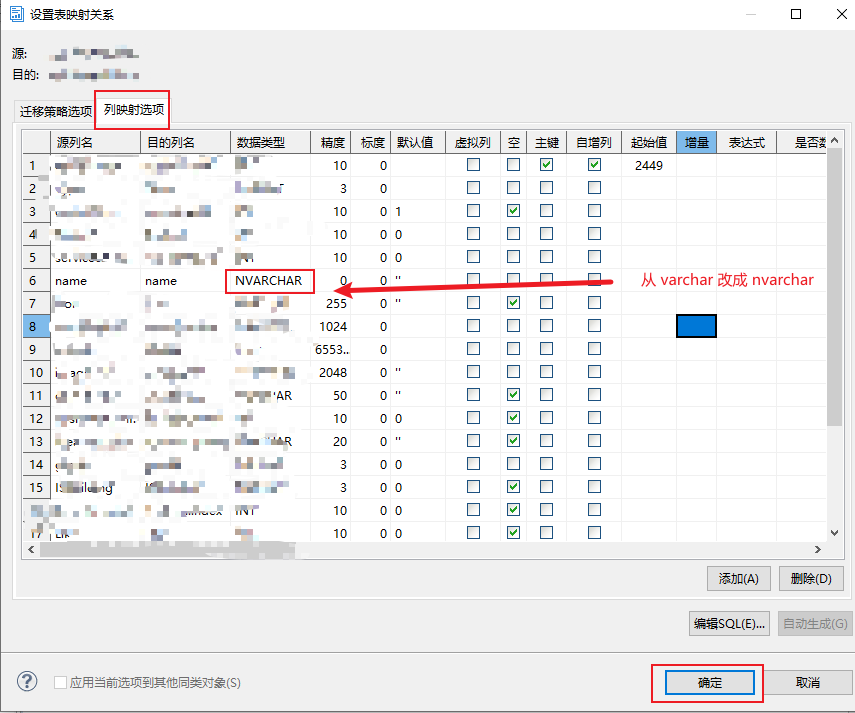1、Java instanceof 关键字语法知识点及案例代码
Java instanceof 关键字语法知识点
instanceof 是 Java 中的一个关键字,用于测试一个对象是否是一个特定类的实例,或者是这个类的子类的实例。它返回一个布尔值,常用于类型检查和类型转换之前,以避免 ClassCastException。
语法格式:
result = object instanceof className;
object:要进行类型检查的对象。className:要检查的类名或接口名。result:返回一个布尔值,如果object是className类的实例或其子类的实例,则返回true,否则返回false。
注意事项:
instanceof运算符只适用于对象类型,不适用于原始数据类型(如int、double等)。instanceof运算符用于在运行时判断对象的类型,因此通常比较耗时,应尽量避免频繁使用。null用instanceof跟任何类型比较时,总是返回false。instanceof运算符不能用于确定一个对象是否是某个类的子类,但它可以用于检查一个对象是否实现了某个接口。
案例代码
案例1:基本用法
class Animal {
void makeSound() {
System.out.println("Some sound");
}
}
class Dog extends Animal {
void bark() {
System.out.println("Woof");
}
}
public class InstanceOfExample {
public static void main(String[] args) {
Animal myAnimal = new Dog();
if (myAnimal instanceof Dog) {
Dog myDog = (Dog) myAnimal;
myDog.bark();
}
}
}
在这个例子中,myAnimal 是 Dog 的一个实例。在将 myAnimal 转换为 Dog 类型之前,使用 instanceof 检查它是否是 Dog 的实例。
案例2:多态和处理不同类型的对象
class Shape {
void draw() {
System.out.println("Drawing a shape");
}
}
class Circle extends Shape {
void draw() {
System.out.println("Drawing a circle");
}
}
class Square extends Shape {
void draw() {
System.out.println("Drawing a square");
}
}
public class InstanceOfExample2 {
public static void main(String[] args) {
Shape[] shapes = {new Circle(), new Square(), new Shape()};
for (Shape shape : shapes) {
if (shape instanceof Circle) {
((Circle) shape).draw();
} else if (shape instanceof Square) {
((Square) shape).draw();
} else {
shape.draw();
}
}
}
}
在这个例子中,shapes 数组包含不同类型的 Shape 对象。在遍历数组时,使用 instanceof 关键字来检查每个对象的类型,并调用相应的 draw 方法。
案例3:避免冗余检查和处理null
class Person {}
class Teacher extends Person {}
class Student extends Person {}
public class Test01 {
public static void main(String[] args) {
Object obj = new Student();
System.out.println(obj instanceof Student); // true
System.out.println(obj instanceof Person); // true
System.out.println(obj instanceof Object); // true
System.out.println(obj instanceof String); // false
System.out.println(obj instanceof Teacher); // false
Person person = new Student();
System.out.println(person instanceof Person); // true
System.out.println(person instanceof Object); // true
// System.out.println(person instanceof String); // 编译错误
System.out.println(person instanceof Teacher); // false
String str = null;
if (str instanceof String) {
System.out.println("This is a string");
} else {
System.out.println("This is not a string"); // 输出 "This is not a string"
}
}
}
在这个例子中,instanceof 检查了对象是否是某个类的实例,并且展示了如何处理 null 值。
案例4:接口检查
interface Flyable {}
class Bird implements Flyable {}
public class InstanceOfExample3 {
public static void main(String[] args) {
Bird bird = new Bird();
if (bird instanceof Flyable) {
System.out.println("Bird can fly");
}
}
}
在这个例子中,instanceof 用于检查一个对象是否实现了某个接口。
通过以上案例,我们可以看到 instanceof 在 Java 中的广泛应用,特别是在处理多态、类型检查和类型转换时。它可以帮助确保代码的类型安全,避免在运行时发生类型转换异常。
以下是对Java中instanceof关键字细节的进一步补充:
一、instanceof的工作原理
在Java中,每个对象都有一个运行时类型标识(runtime type identification),这个标识由Java虚拟机在对象创建时自动添加,并保存在对象头中。当使用instanceof运算符对对象进行判断时,实际上是通过比较该对象的运行时类型标识和指定类的类型来确定对象是否是指定类的实例。Java虚拟机在运行时会自动维护一个类型层次结构(type hierarchy),包括类和接口之间的继承关系。当使用instanceof运算符判断一个对象是否是某个类的实例时,Java虚拟机会沿着类型层次结构向上查找,直到找到该对象的类或直接或间接继承自指定类的子类为止。如果找到了该类,则返回true,否则返回false。
二、instanceof的注意事项
- 避免冗余检查:如果编译器已经知道对象的类型,
instanceof检查是多余的。例如,对于已知是String类型的对象,进行instanceof String的检查是不必要的。 - 处理
null值:对于null值,instanceof运算符总是返回false。因为null没有类型信息,它不能被视为任何类的实例。 - 类型层次结构检查:
instanceof运算符检查的是对象的类型层次结构,包括类的继承和接口的实现。因此,如果一个对象实现了某个接口,那么使用instanceof运算符可以检查该对象是否是该接口的实例。 - 性能考虑:虽然
instanceof运算符在大多数情况下是高效的,但在某些性能敏感的场景下,频繁使用instanceof可能会导致性能下降。因此,在可能的情况下,应尽量避免频繁使用instanceof运算符。
三、instanceof的应用场景
- 类型转换:在使用强制类型转换之前,可以使用
instanceof运算符检查对象的类型,以避免ClassCastException异常的发生。例如,将一个对象转换为String类型之前,可以使用instanceof运算符检查该对象是否是String类型的实例。 - 运行时类型判断:在某些情况下,需要在运行时根据对象的类型执行不同的代码逻辑。这时可以使用
instanceof运算符来判断对象的类型,并根据类型执行相应的操作。例如,在处理一个包含不同类型对象的集合时,可以使用instanceof运算符来遍历集合中的每个对象,并根据对象的类型执行不同的操作。 - 对象匹配:在集合或数组中包含不同类型的对象时,可以使用
instanceof进行类型检查和处理。例如,在一个包含多种类型对象的列表中查找特定类型的对象时,可以使用instanceof运算符来筛选符合条件的对象。
四、示例代码
以下是一个包含多个instanceof使用场景的示例代码:
class Animal {
void makeSound() {
System.out.println("Animal sound");
}
}
class Dog extends Animal {
void bark() {
System.out.println("Woof");
}
}
class Cat extends Animal {
void meow() {
System.out.println("Meow");
}
}
interface Flyable {
void fly();
}
class Bird implements Flyable {
public void fly() {
System.out.println("Bird flying");
}
}
public class InstanceOfExample {
public static void main(String[] args) {
// 类型转换
Animal myAnimal = new Dog();
if (myAnimal instanceof Dog) {
Dog myDog = (Dog) myAnimal;
myDog.bark();
}
// 运行时类型判断
Animal[] animals = {new Dog(), new Cat(), new Animal()};
for (Animal animal : animals) {
if (animal instanceof Dog) {
((Dog) animal).bark();
} else if (animal instanceof Cat) {
((Cat) animal).meow();
} else {
animal.makeSound();
}
}
// 对象匹配
Object[] objects = {new Bird(), new Integer(10), new String("Hello")};
for (Object obj : objects) {
if (obj instanceof Flyable) {
((Flyable) obj).fly();
} else if (obj instanceof String) {
System.out.println("Found a string: " + obj);
} else if (obj instanceof Integer) {
System.out.println("Found an integer: " + obj);
} else {
System.out.println("Unknown type: " + obj.getClass().getName());
}
}
// 处理null值
Animal nullAnimal = null;
if (!(nullAnimal instanceof Animal)) {
System.out.println("nullAnimal is not an instance of Animal");
}
}
}
在这个示例中,我们展示了instanceof运算符在类型转换、运行时类型判断、对象匹配以及处理null值等方面的应用。通过这些示例,我们可以更好地理解instanceof运算符在Java编程中的实际用法和重要性。
当然可以。以下是一个使用instanceof运算符的简单Java示例:
class Animal {
void makeSound() {
System.out.println("Some generic animal sound");
}
}
class Dog extends Animal {
void bark() {
System.out.println("Woof woof");
}
}
class Cat extends Animal {
void meow() {
System.out.println("Meow meow");
}
}
public class InstanceOfDemo {
public static void main(String[] args) {
Animal myDog = new Dog(); // 向上转型
Animal myCat = new Cat(); // 向上转型
// 使用instanceof运算符检查对象类型
if (myDog instanceof Dog) {
System.out.println("myDog is an instance of Dog");
// 向下转型并调用Dog类的方法
((Dog) myDog).bark();
}
if (myCat instanceof Cat) {
System.out.println("myCat is an instance of Cat");
// 向下转型并调用Cat类的方法
((Cat) myCat).meow();
}
// 检查一个对象是否不是某个类型的实例
if (!(myDog instanceof Cat)) {
System.out.println("myDog is not an instance of Cat");
}
// 处理null值
Animal nullAnimal = null;
if (nullAnimal == null || !(nullAnimal instanceof Animal)) {
System.out.println("nullAnimal is either null or not an instance of Animal");
}
}
}
在这个示例中,我们定义了一个基类Animal和两个子类Dog和Cat。在main方法中,我们创建了Dog和Cat的实例,并将它们向上转型为Animal类型。然后,我们使用instanceof运算符来检查这些对象的实际类型,并根据类型执行相应的操作。
输出结果将是:
myDog is an instance of Dog
Woof woof
myCat is an instance of Cat
Meow meow
myDog is not an instance of Cat
nullAnimal is either null or not an instance of Animal
这个示例展示了instanceof运算符在运行时检查对象类型的能力,以及如何在确认类型后进行安全的向下转型和调用子类特有的方法。同时,也展示了如何处理null值的情况。



















